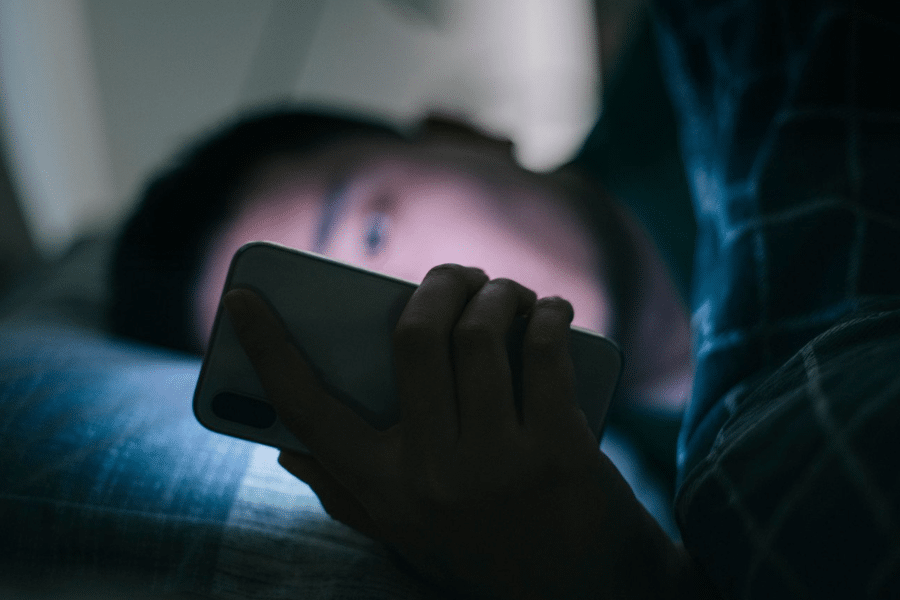

Throughout lucid dreaming, the sleeper is mindful that he or she is having a dream but refuses to wake up. Some describe these experiences further as dreams in which the sleeper has power over various facets of their environment, though experiments have shown that this is not necessarily the case, and that some individuals are more predisposed to “lucid dream power” than some others. However, anyone can learn how to lucid dream.
According to surveys, about 55% of individuals have had a lucid dream in their lives, and 23% of individuals have lucid dreams at least monthly. Most studies have shown that lucid dreaming could be useful in treating nightmares. Other findings, however, contend that lucid dreams are harmful to mental health because they disrupt sleep and allow dreamers to confuse the boundaries between reality and illusion.

Dr. Stephen LaBerge, a psychophysiologist, has been a specialist in lucid dreaming science for the last 20 years. He not only invented one of the most common lucid dreaming strategies, but he has also directed numerous scientific studies on the topic.
LaBerge’s thesis also aided scholars in discovering the psychological effects of lucid dreaming. It can be beneficial in the treatment of disorders such as anxiety, repeating nightmares, and PTSD. Lucid dreaming normally occurs on its own. However, there are many approaches for learning how to lucid dream.
Many individuals have lucid dreams of their own and their minds are alert at the stage of sleep. Some people teach themselves to dream lucidly in order to harness the power of lucid dreaming and use them to their benefit. Lucid dreams have been shown to enhance motor skills, reduce anxiety, increase creativity, dispel phobias and help with insomnia.
Anxiety Reduction: Since lucid dreams exist somewhere between reality and dreams, people will use them to act out real-life scenarios. For example, if you are worried about an upcoming work interview, you should go over it in your head several times before going to bed. Your brain becomes used to the situation, and the likelihood of the scene unfolding out in your dream, where you have control over your behavior, is high. Watching and replaying the scene of your sleep and being mindful of what is going on helps to reduce anxiety. When you get more familiar with the situation, the fear of the unexpected disappears.
Address Recurrent Nightmares and PTSD: Nightmares are difficult to cope with, particularly if they occur on a regular basis. Nightmares may be a symptom of Post-Traumatic Stress Disorder (PTSD), which can lead to depression. Since there is an understanding that the nightmares aren’t actual, lucid dreams aid in the treatment of nightmares—it aids in separating reality from dreams. When you realize the nightmare isn’t actual, the trauma associated with it lessens.
Develop your motor skills: Physical therapy may benefit from lucid dreaming. According to a Medical Hypotheses report, psychologically practicing motor skills will improve physical ability to perform them. This implies that people with physical disabilities can be able to learn motor skills while lucid dreaming.

The following are some potential drawbacks:
Often lucid dreams happen on their own and you don’t have to work hard to achieve them. However, if you want to deliberately make things work for you, there are several tactics to employ.
Doing a reality check continuously tests the brain’s ability to distinguish between a sleep cycle and reality. To have lucid dreams, you must prepare your brain to be conscious when it is dreaming.
To do this, the brain must be properly able to distinguish between the sleep and wake states. To improve your ability to lucid dream at night, lucid dream experts recommend doing such things to measure your sense of reality at least 10 times a day.
The exercises below will help you distinguish between wakefulness and sleep.
A restful night’s sleep is a prerequisite for dreaming. Make your bedroom a relaxing sanctuary where you can unwind at the end of the day. Set the temperature, keep your bedroom cool, and sleep on a cozy, high-quality mattress or sheets to encourage dreams. And lucid dreams, like every other dream, need a solid basis for restful sleep. Some great pillows to help your lucid dream are thin pillows or memory foam pillows.
In this method, you set an alarm for five to six hours after falling asleep. Once your alarm clock goes off, you are awake at the REM stage, when your brain is the most engaged, resulting in longer dreaming. If you wake up at this stage and then go back to sleep, you are likely to re-enter your dream mode and become more aware of it.
If you wake up in the middle of a dream, get up and write down what you remember, then try to fall back asleep while dwelling on your dream. As a result, your brain is dreaming about your dream while you sleep, raising your chances of being conscious of it the next time it occurs.
LaBerge developed a method called Mnemonic Induction of Lucid Dreams in 1980. (MILD). It was one of the first approaches to trigger lucid dreaming based on experimental experiments.
MILD is based on a behavior known as prospective memory, which requires planning to do something later.

Log your dreams as soon as you wake up with the best performance. It’s also a good idea to read your dream journal on a regular basis. A good thing to do when you are planning your lucid dream is to is track your sleep. A good tool to assist in tracking your sleep is the Fitbit Alta.
You don’t bother to write down the specifics of your fantasies by using this method. If you wake up in the middle of a dream, you were probably still in the REM stage of sleep. Try to shut your eyes and return to sleep, concentrating your mind on your fantasy. This increases the odds of seeing a lucid dream. However, before a lucid dream, you can suffer “sleep paralysis” during this process. Sleep paralysis is the sensation of being awake but unable to move when your consciousness is awake while your muscles are sleeping. If you awaken during the REM stage of sleep, you will most likely suffer sleep paralysis. Although the sensation can be disturbing and daunting for others, it is a natural and temporary process.
When you are conscious that you are dreaming, you are seeing lucid dreaming Trusted Source The mysteries of 'lucid' dreaming | Consciousness | The Guardian Recent research into a kind of consciousness within the dream state is beginning to tell us more about the brain, writes Vaughan Bell. www.theguardian.com . Often, you have power over the dream’s plot and setting. It happens during REM sleep.
When used in rehabilitation, lucid dreaming can aid in the treatment of symptoms such as chronic dreams and PTSD. Researchers believe it may also help in physical therapy.
Try the strategies mentioned above if you want to lucid dream. These techniques will teach the mind to be aware of its own consciousness when sleeping. If you suspect you have a sleep disorder, PTSD, or another mental health issue, you should see your psychiatrist.
Lucid dreams are distinguished by the fact that sleepers are aware that they are dreaming and, in some situations, have control of their surroundings. Any research has related these characteristics to increased cortical function. Prefrontal cortex activation levels during lucid dreams are equal to levels when sleepers are awake, according to sleepers that have been studied during lucid dream experiments. As a result, lucid dreaming is often referred to as a “hybrid sleep-wake state.”





